Bee Collecting Pollen From An Arum lily - “calla lily” - Zantedeschia Aethiopica - Wit Varkoor (Afrikaans) = Pigs Ear
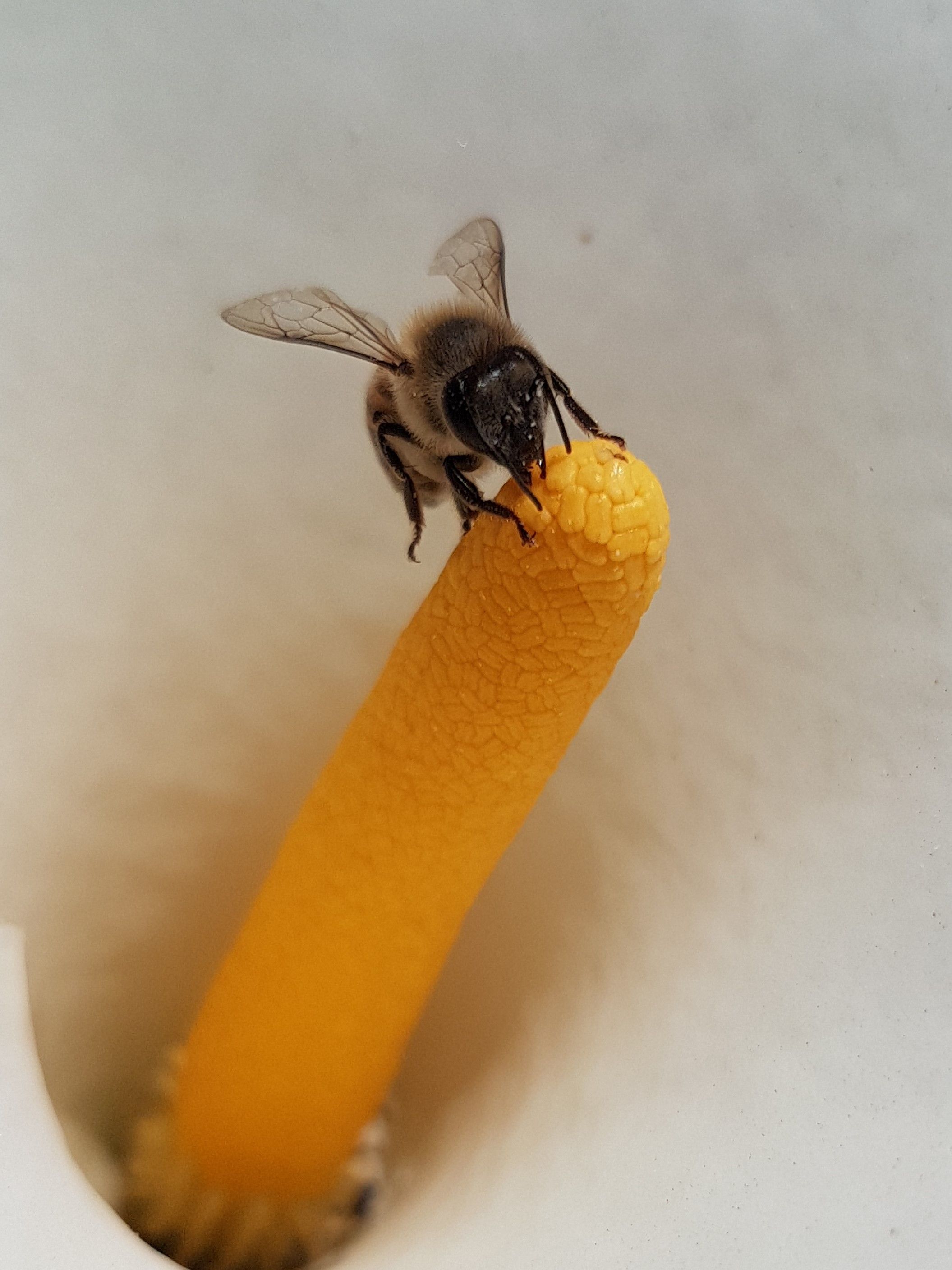
There are over 20 000 bee species in the world. Bees can see all colours except red and have an excellent sense of smell. Here is a clear photograph of a worker bee collecting pollen and/or nectar from an Arum lily. You can clearly see the little fuzzy hair on his body which helps in collecting pollen and regulates its body temperature, the two compound eyes, two extremely sensitive antennae and its mouth (mandible).
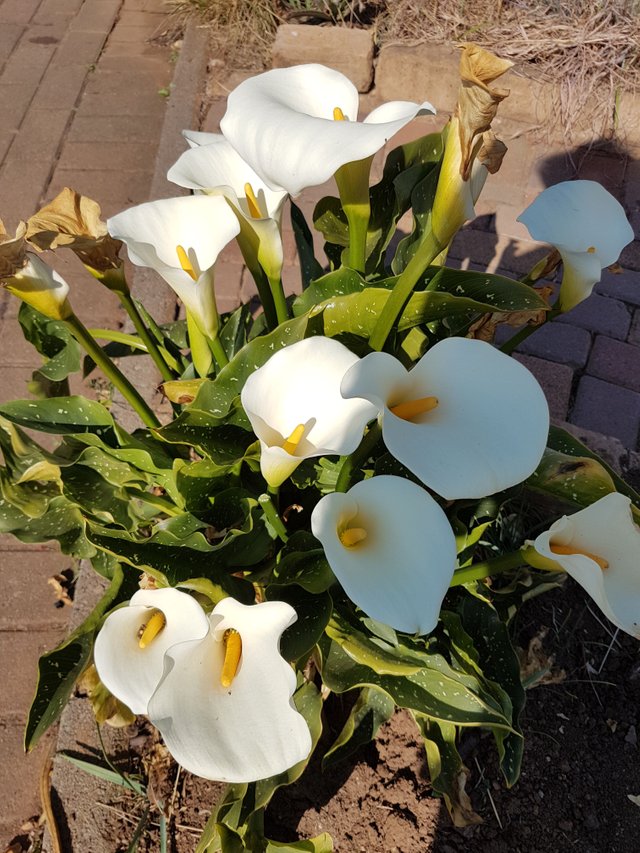
Arum lilies are native to Southern Africa and thrive in tropical and warmer climates. We have seven species in Africa.
It is a fast growing, versatile, evergreen plant that can grow up to a meter tall. You can find them in colonies and they flower from August to January. These vaguely scented flowers attract insects and bees which pollinate the flowers. The leaves have water stomata which discharge excess water by "guttation". Once it stops blooming the plant enters a dormant phase where you should not water it.
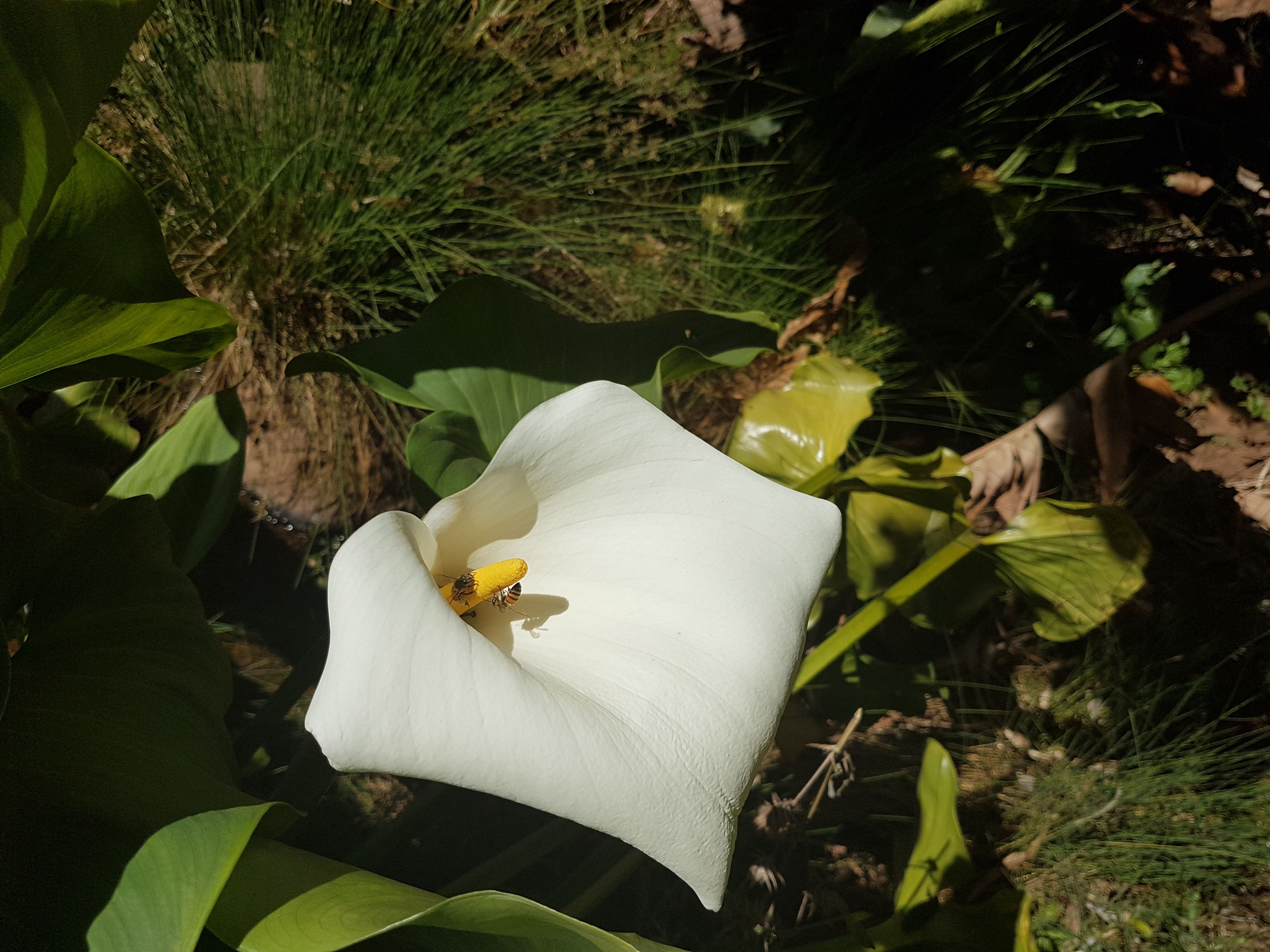
They need a semi-shaded area but can survive full sun close to water. You will often find colonies close to river springs and pond banks. This plant needs rich, well-drained soil and quite a bit of water.
You can sit quietly around an Arum lily and watch worker bees coming and going for the entire day.

The Arum lily produces calcium oxalate which makes them highly poisonous for human consumption and it is advisable to wash your hands after working with them immediately as the sap can cause irritation to sensitive skin and eyes.
The flower symbolises purity and is a long lasting cut flower used in mostly bridal bouquets. They grow successfully in pots too and can brighten up your office or any other space. Watering these pants every 3-4 days is very important for a healthy blooming plant.
This photo displays the pollen collected by the bee carrying it on his hind legs in the pollen basket.
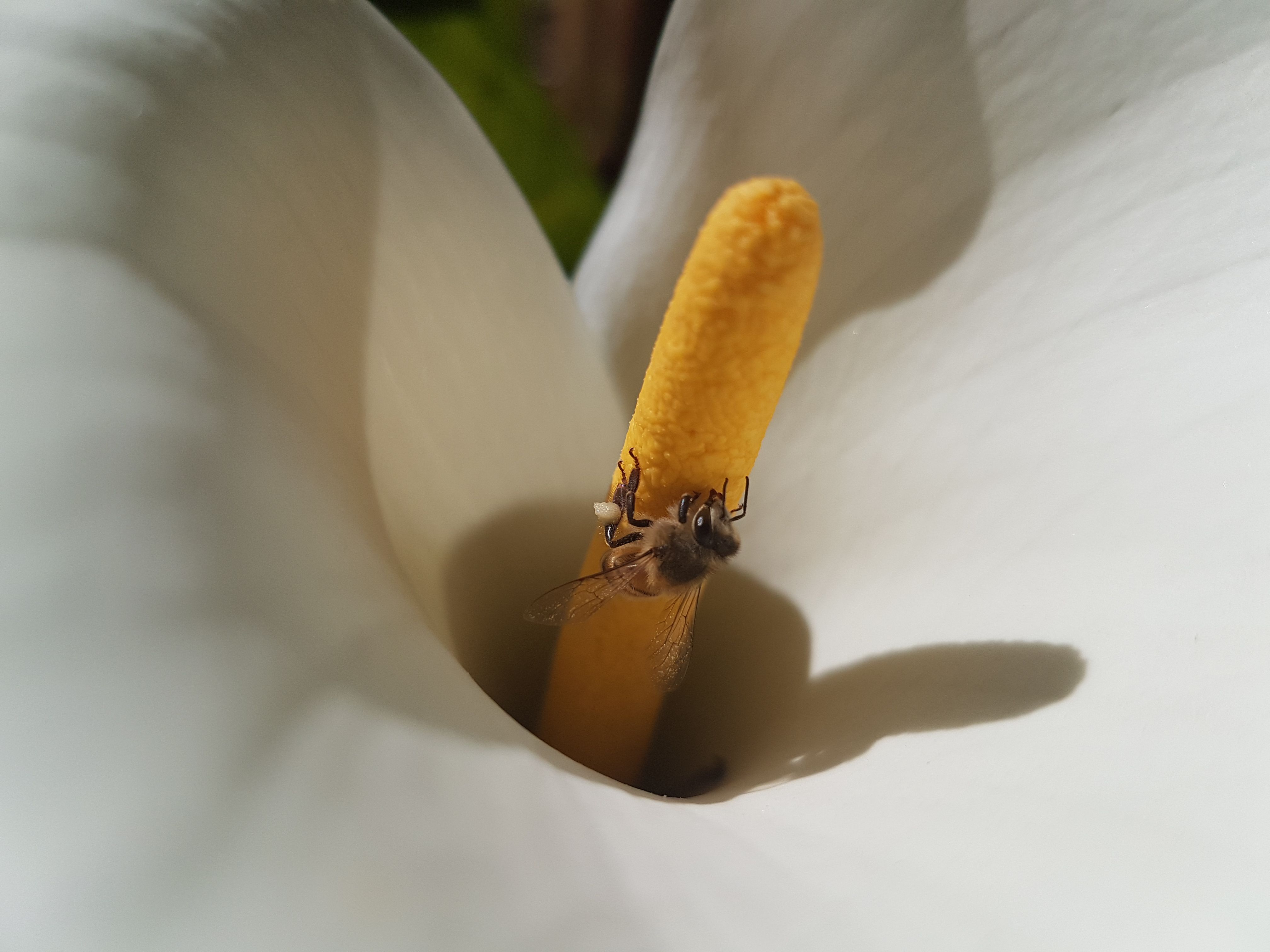
Zantedeschia hybrids
Every year you will find new hybrids on the market in colours such as black, purple, orange-yellow, yellow, pink, lilac and maroon. Below are two examples.
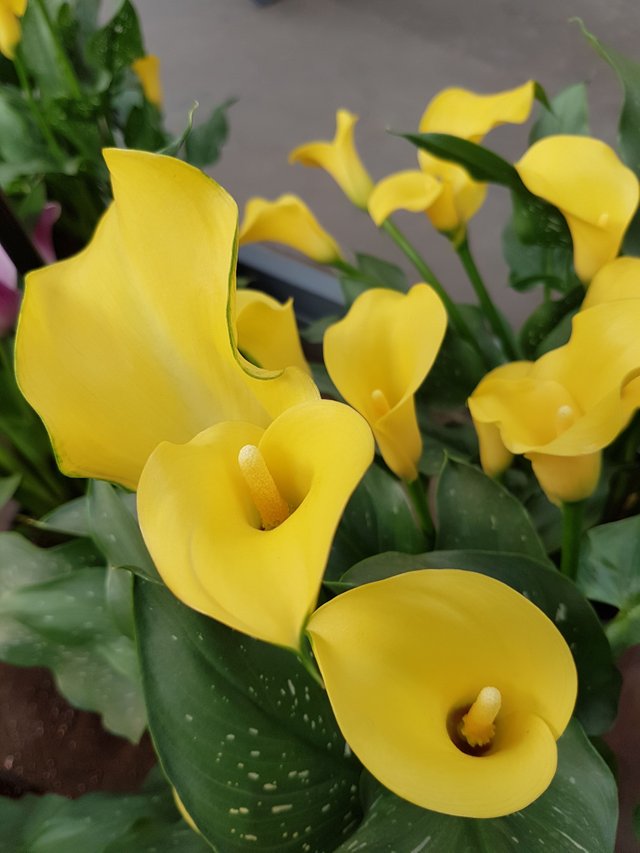
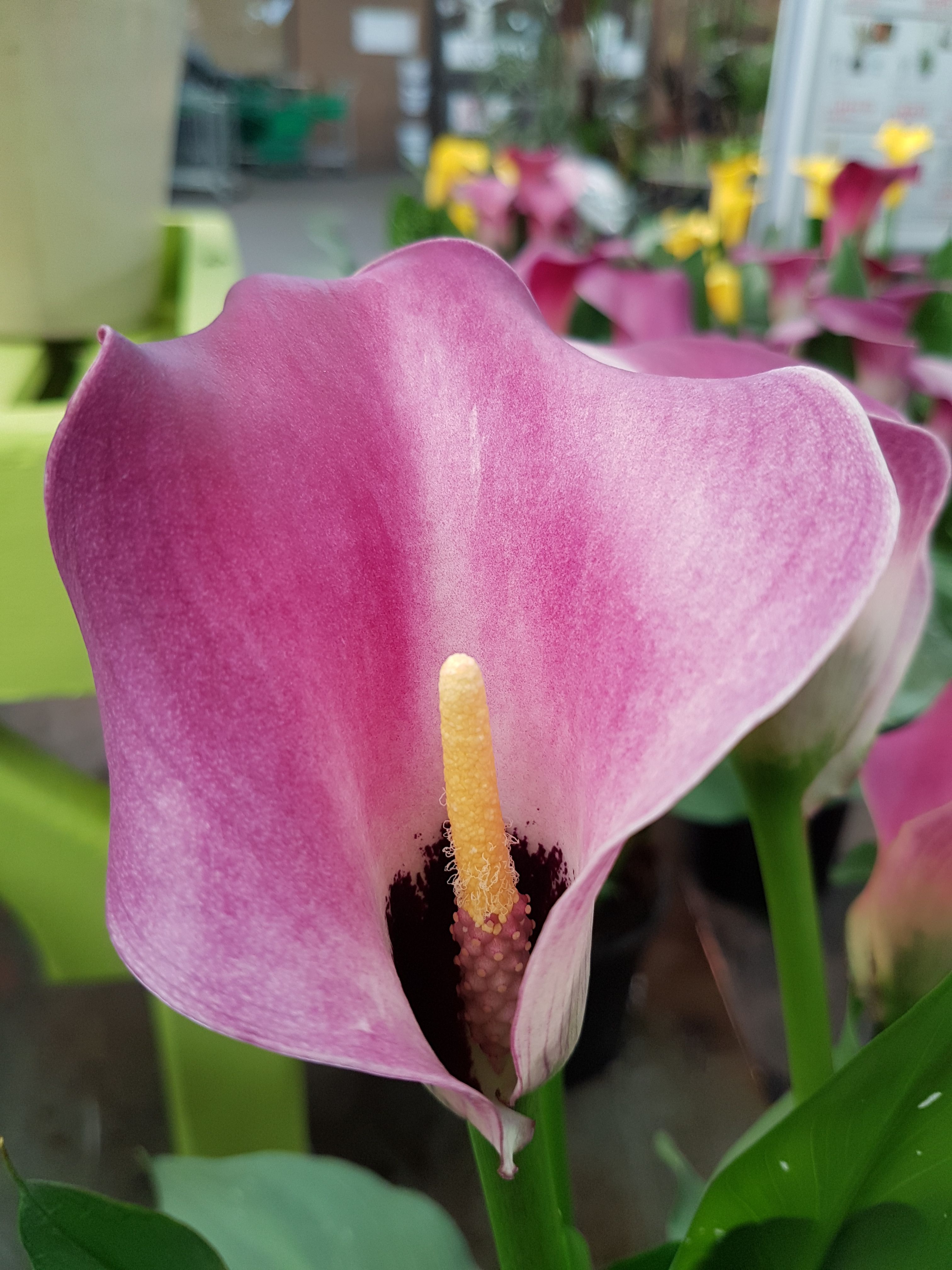
Arum lilies is must in every garden with their elegant bloom and ability to attract insects.

nice photos
thx for sharing
I will support you, God bless you, I learn english, so if I made some mistakes, then I apologize and keep it
thank you very much
非常感谢你
Awesome shot, I'm also learning about micro photography, thanks for sharing.
Interesting
Cool this information :)
I love you and love your publications I want to be like you and I would be grateful that if you support me, I love you, O Great
Beautiful pictures. Thank you.
the main thing affecting the type of honey is the type of flower.
Very good thanks
Save the Bees!